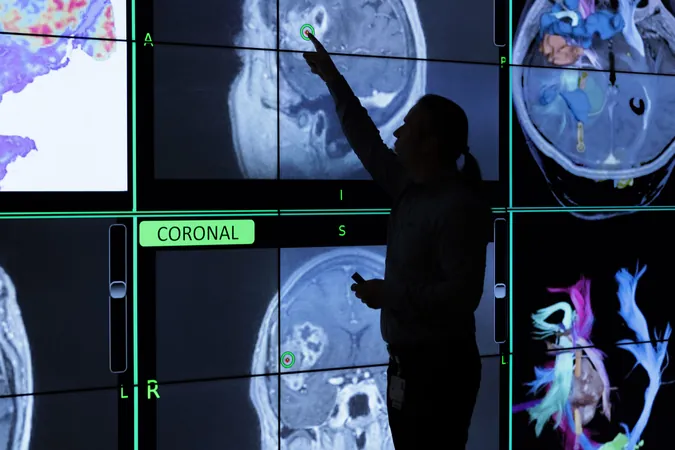
Revolutionizing Brain Cancer Treatment: How AI is Shaping the Future of Diagnosis and Monitoring
2024-11-14
Author: Wei
Introduction
In a groundbreaking development, an international team of neuro-oncology experts has unveiled a set of vital guidelines on utilizing artificial intelligence (AI) to enhance the diagnosis, monitoring, and treatment of brain cancer. This collaboration aims to ensure that clinical trial results are both reliable and prioritize patient safety.
Published in The Lancet Oncology, these recommendations come from the Response Assessment in Neuro-Oncology (RANO) cooperative group, a collective of esteemed professionals dedicated to establishing standardized criteria for evaluating treatment responses in brain cancer clinical trials. The second policy review was led by Spyridon Bakas, an esteemed scholar at Indiana University School of Medicine.
The Need for AI in Neuro-Oncology
Bakas emphasizes that the current practice, relying on individual radiologists to assess tumor size—a critical factor in determining treatment options—often introduces subjectivity. “Radiologists may interpret imaging differently, leading to inconsistent treatment strategies," he notes. AI can eliminate this variability by providing objective analysis of tumor images, which can accurately determine disease type, tumor subtype, and malignancy grade, while also tracking treatment progress.
Innovations and Cautions in AI Implementation
The recent innovations have introduced predictive and diagnostic AI models that offer promising solutions for healthcare professionals. However, Raymond Y. Huang, a prominent researcher at Harvard Medical School, cautions that these AI systems must be employed in a standardized manner across institutions to truly transform patient care.
Development of the Guidelines
The newly established guidelines were developed after meticulous evaluation of existing research on AI advancements in neuro-oncology. They were showcased at major conferences, including the American Society of Clinical Oncology in Chicago and the European Association for Neuro-Oncology in Glasgow, and will be featured at the Society for Neuro-Oncology meeting in Houston later this year.
Key Highlights of the Guidelines
Key highlights of the guidelines include: - Utilizing software derived from comprehensive and diverse patient datasets. - Aligning AI tumor definitions with World Health Organization standards. - Carefully considering the methods of obtaining, processing, and segmenting tumor images prior to analysis.
Importance and Future of AI in Neuro-Oncology
Thomas Booth from King's College London asserts, “These guidelines are essential for ensuring AI tools developed globally adhere to rigorous standards and ultimately enhance patient outcomes.” With these recommendations, the path is paved for a future where AI applications in neuro-oncology are accurate, standardized, and beneficial to clinicians and patients alike.
While these guidelines represent some of the first attempts worldwide to govern the use of AI in cancer care, the experts unanimously agree that further research is crucial. Bakas emphasizes the importance of studying AI models in diverse patient populations to refine our understanding of brain cancer and continue improving treatment methodologies.
Conclusion
As the intersection of technology and medicine continues to evolve, patients can look forward to a future where brain cancer diagnosis and treatment becomes more precise and effective, marking a significant leap forward in the battle against this devastating disease. Don't miss out on the revolution—stay tuned for the latest updates in neuro-oncology!



 Brasil (PT)
Brasil (PT)
 Canada (EN)
Canada (EN)
 Chile (ES)
Chile (ES)
 España (ES)
España (ES)
 France (FR)
France (FR)
 Hong Kong (EN)
Hong Kong (EN)
 Italia (IT)
Italia (IT)
 日本 (JA)
日本 (JA)
 Magyarország (HU)
Magyarország (HU)
 Norge (NO)
Norge (NO)
 Polska (PL)
Polska (PL)
 Schweiz (DE)
Schweiz (DE)
 Singapore (EN)
Singapore (EN)
 Sverige (SV)
Sverige (SV)
 Suomi (FI)
Suomi (FI)
 Türkiye (TR)
Türkiye (TR)